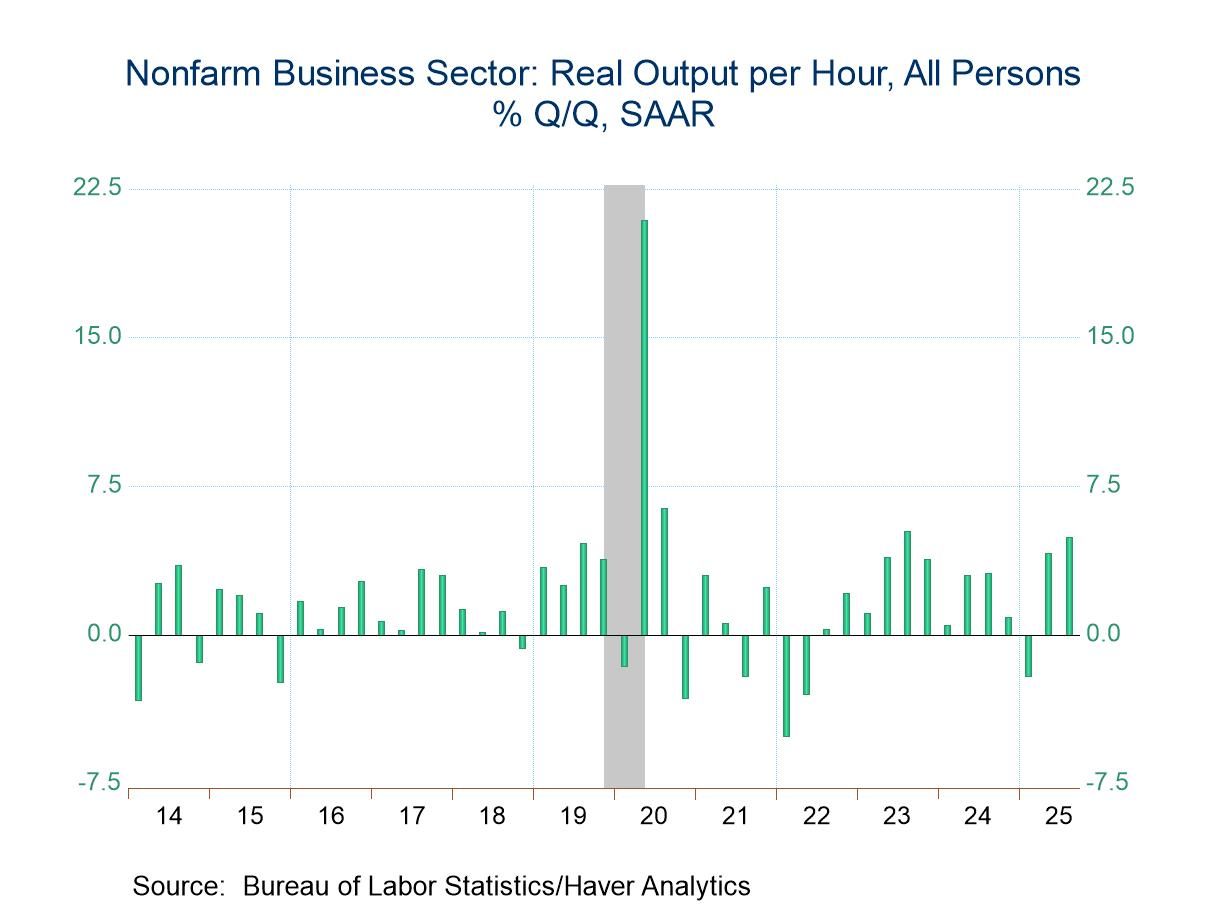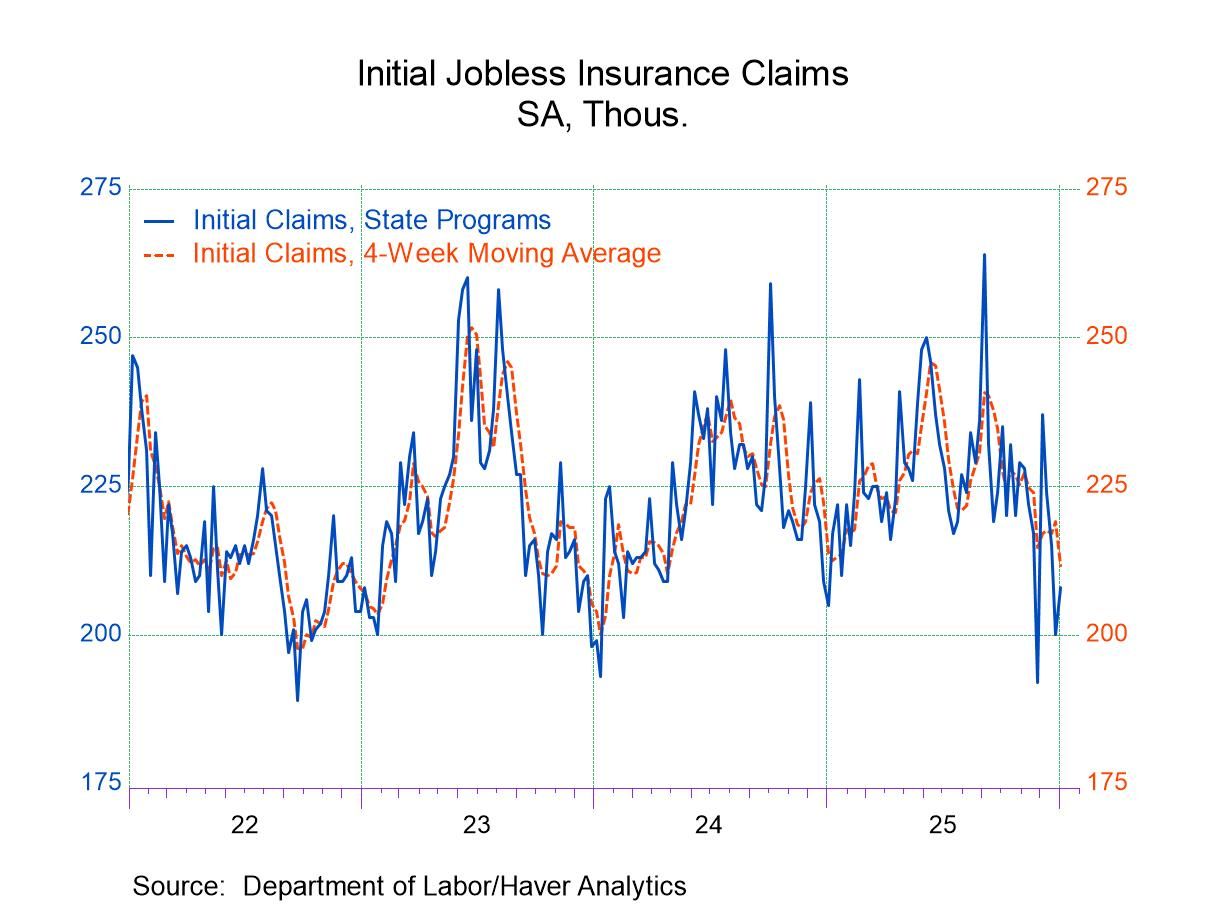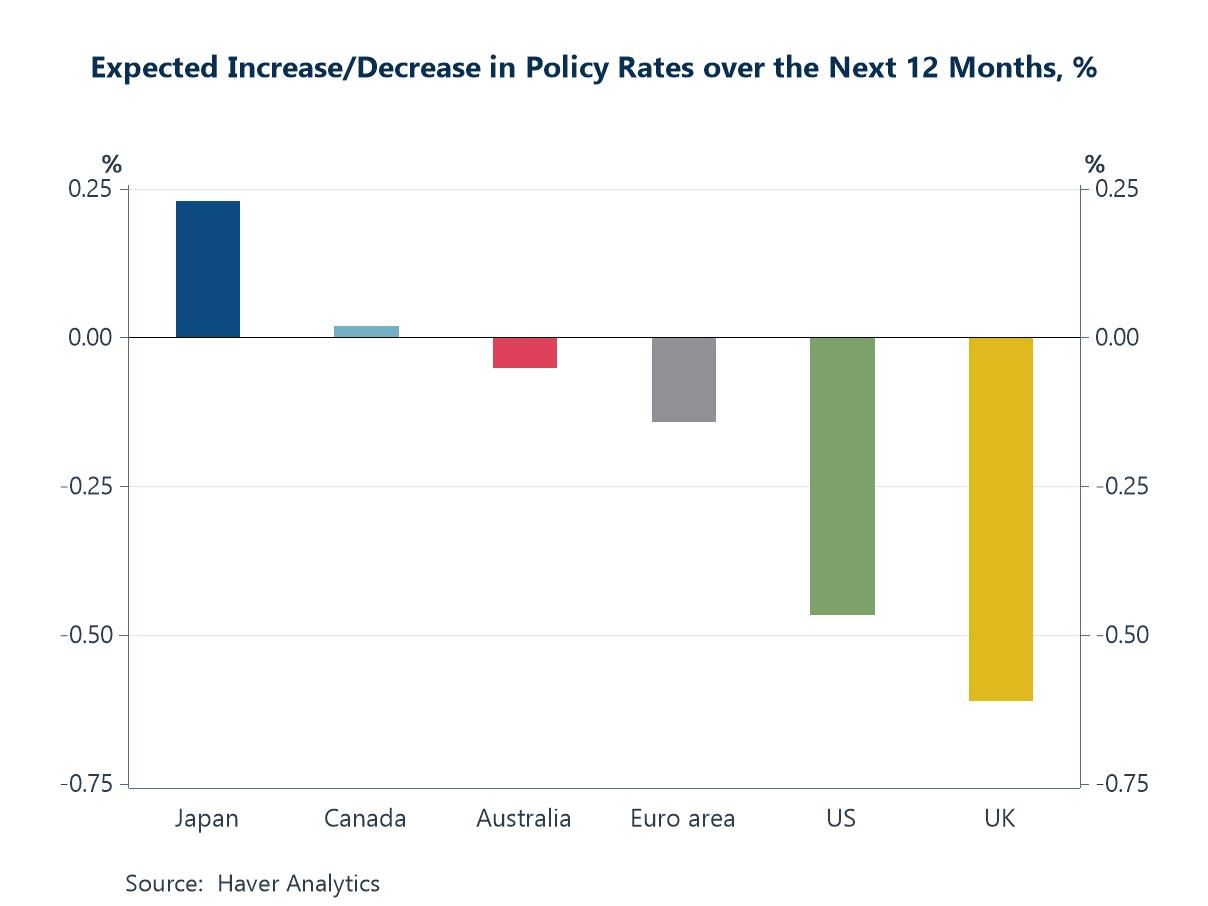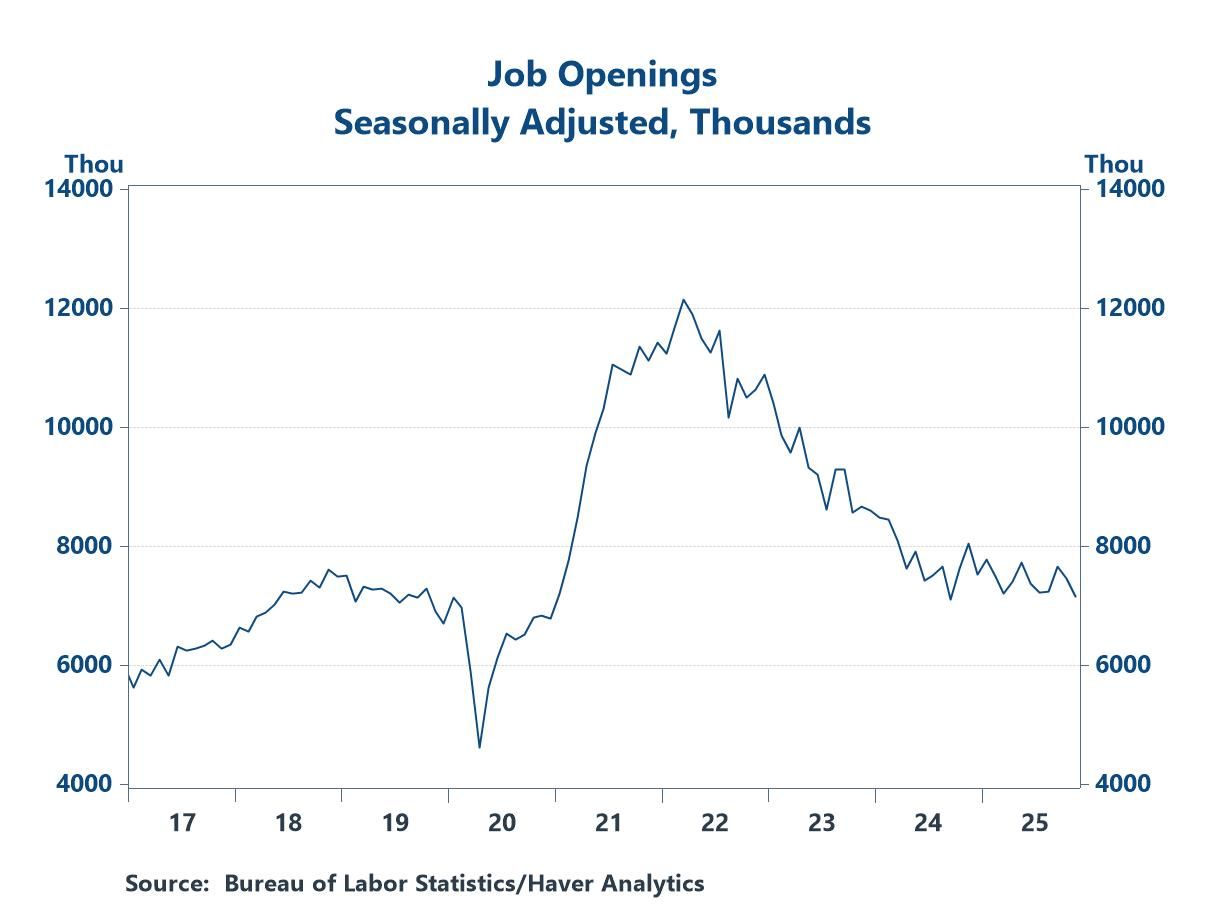 Global| Jun 30 2006
Global| Jun 30 2006Japan Employment Hesitates, But Remains High; Unemployment Rate at 8-Year Low
Summary
For Japan, as was the case yesterday with Germany, the last time we wrote about the labor market was three months ago. Back then, we were all excited about rising employment in Japan and falling unemployment, particularly for [...]

For Japan, as was the case yesterday with Germany, the last time we wrote about the labor market was three months ago. Back then, we were all excited about rising employment in Japan and falling unemployment, particularly for February. In the intervening months, however, Japanese labor conditions have hesitated somewhat, although employment has been basically stable with February's strong performance.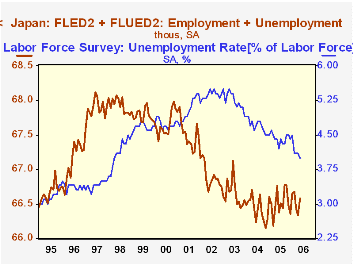
In May, employment gained 270,000 after a cumulative loss of 280,000 in March and April. The total amount in May, 63.91 million workers, remains above the levels of all but two months in the last 4 1/2 years. The highest was 63.93 million in September 2005, followed by February's 63.92 million. Other months, as evident from the graph and the table below, have been noticeably weaker.
The news headlines today highlighted May's low unemployment rate, 4.0%, which, as seen in the second graph, is the lowest since early 1998. However, our own enthusiasm was tempered by a look at labor force data. Japan's Ministry of Internal Affairs and Communications doesn't publish the labor force series on a seasonally adjusted basis, but we can calculate it by adding employment and unemployment. Last time we assessed these data, we were pleased to describe growth in the labor force, which meant that the decline in unemployment was coming from the strength of employment. This time, though, as we describe above, employment has been flat for three months and the second graph shows that the labor force has also stopped growing. Thus, May's dip in unemployment is not a sign of further strength, but of hesitation by workers, who likely remain skittish about the prospects for continuing growth.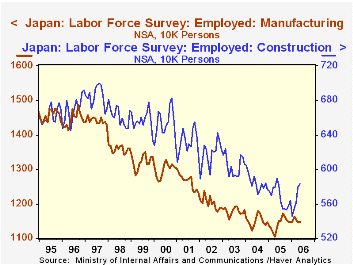
At the same time, we don't want to downplay the employment performance. Two key sectors, manufacturing and construction are looking better. The third graph indicates that these have both stabilized after declines that began in about 1997. These industry data are not seasonally adjusted either, so they're a bit erratic. But manufacturing is notable for not experiencing the jobs decline that has characterized the spring months in several recent years; instead, gains from last summer have largely held, a situation we see as impressive with the competition Japan manufacturing faces from its neighbors. Construction job gains are a good sign that investment is picking up, a quite tangible expression of confidence.
| Disposition of Personal Income | May | April | Y/Y | 2005 | 2004 | 2003 |
|---|---|---|---|---|---|---|
| Personal Income | 0.4% | 0.7% | 5.4% | 5.4% | 5.9% | 3.2% |
| Personal Consumption | 0.4% | 0.7% | 6.7% | 6.5% | 6.5% | 4.9% |
| Savings Rate | -1.7% | -1.6% | 0.0% (May '05) | -0.5% | 1.7% | 2.1% |
| PCE Chain Price Index | 0.4% | 0.5% | 3.3% | 2.8% | 2.6% | 1.9% |
| Less food & energy | 0.2% | 0.2% | 2.1% | 2.0% | 2.0% | 1.3% |
Carol Stone, CBE
AuthorMore in Author Profile »Carol Stone, CBE came to Haver Analytics in 2003 following more than 35 years as a financial market economist at major Wall Street financial institutions, most especially Merrill Lynch and Nomura Securities. She had broad experience in analysis and forecasting of flow-of-funds accounts, the federal budget and Federal Reserve operations. At Nomura Securities, among other duties, she developed various indicator forecasting tools and edited a daily global publication produced in London and New York for readers in Tokyo. At Haver Analytics, Carol was a member of the Research Department, aiding database managers with research and documentation efforts, as well as posting commentary on select economic reports. In addition, she conducted Ways-of-the-World, a blog on economic issues for an Episcopal-Church-affiliated website, The Geranium Farm. During her career, Carol served as an officer of the Money Marketeers and the Downtown Economists Club. She had a PhD from NYU's Stern School of Business. She lived in Brooklyn, New York, and had a weekend home on Long Island.


